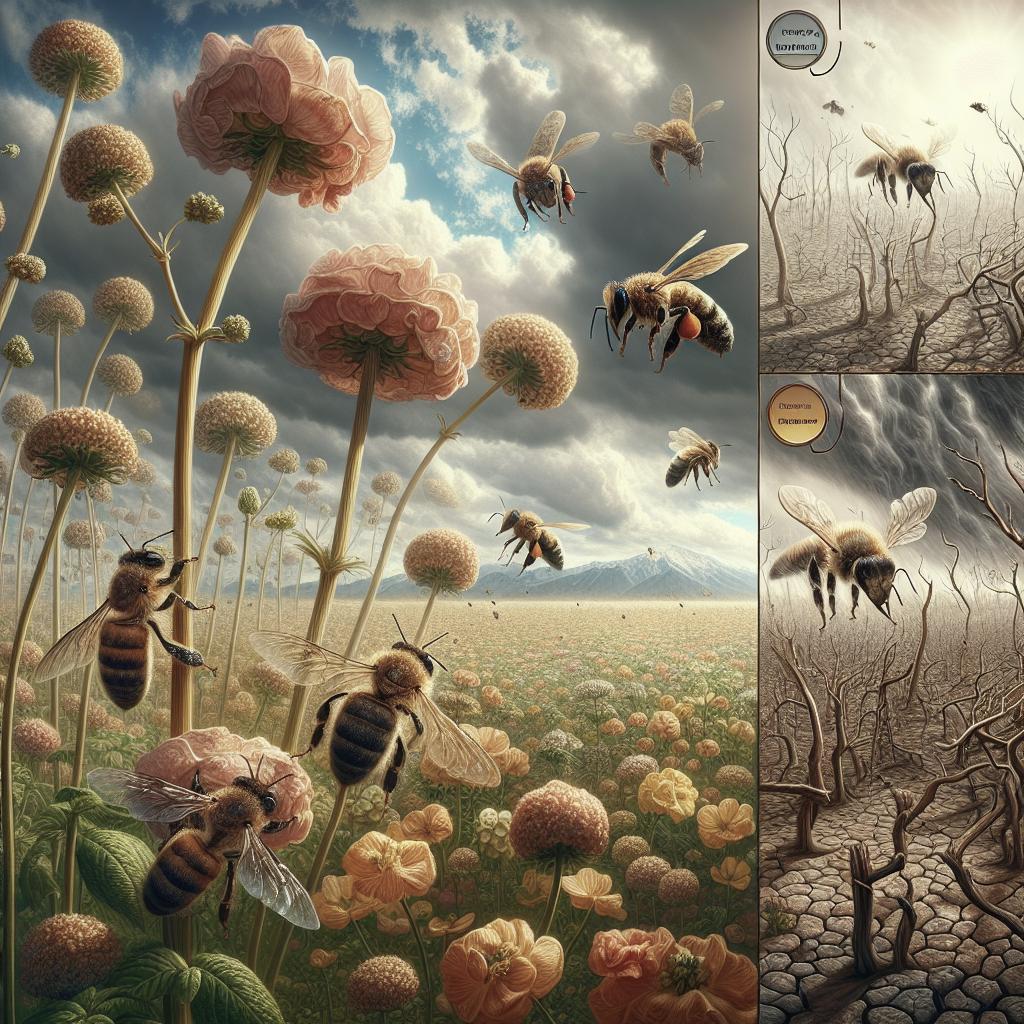Written By
Lucas Martin
Story Tags
Climate Change, Bees, Environment, Ecology, Biodiversity, Conservation
Published
October 20, 2023
How Climate Change Affects Bees
Climate change poses a significant threat to biodiversity, with bees being one of the most affected species. These tiny pollinators play a crucial role in our ecosystems and agricultural systems. This blog post delves into how rising temperatures and erratic weather patterns impact bee populations and, consequently, biodiversity and agriculture. We will explore changes in blooming seasons, habitat loss, and diseases exacerbated by climate shifts. Ultimately, understanding these effects is critical for developing strategies to protect these industrious insects and maintain global food security.
Facilities
Bees are indispensable to the process of pollination, facilitating the reproduction of countless plant species. However, climate change is altering the facilities of the environment they rely upon. Rising temperatures lead to mismatches in the timing of flowering and the emergence of bees. Flowers may bloom earlier than usual, and if bees are not present to pollinate during this crucial window, both plant reproduction and bee nutrition suffer significantly.
Moreover, bees are sensitive to temperature changes that can affect their health and survival rates. Warmer climates can disrupt bees’ natural life cycles, forcing them to endure longer periods of dearth, when flowers are not blooming and food is scarce. This increases the strain on bee colonies, making it harder for them to survive and thrive.
Furthermore, climate change influences the geographical distribution of both bee populations and the plants they pollinate. As temperatures rise, some species may migrate to cooler areas in search of suitable habitats, leading to disruption in local ecosystems. This relocation might result in a shortage of pollinators in certain regions, negatively impacting agricultural productivity.
Latest Stories
In recent years, studies have shown that extreme weather events, driven by climate change, are detrimental to bee populations. Heavy rainfall, severe droughts, and unexpected frosts can destroy colonies and reduce their numbers. Without stable weather patterns, bees face increased mortality rates, as their nests and food resources are often directly affected by such events.
Furthermore, climate change is linked to the spread of new pathogens and parasites, such as the Varroa mite, which plague bee populations. Warmer weather facilitates the transmission of these threats, compounding the challenges bee colonies face in maintaining their health and productivity.
Efforts to address these threats include breeding bees that are more resilient to changing climates and promoting diverse agricultural practices that provide bees with consistent food sources. However, these initiatives require cooperation and commitment on a global scale to be effective.
Final Thoughts
The interplay between climate change and its impact on bees is complex and multifaceted. As one of Earth’s essential pollinators, the decline in bee populations can have cascading effects on global agriculture and ecosystems. Addressing this issue necessitates urgent action in terms of conservation, research, and adaptation strategies to mitigate the negative impacts of climate change on bee populations.
Governments, scientists, and individuals must collaborate to create and implement measures aimed at slowing down climate change while protecting pollinators. Encouraging biodiversity and adopting climate-smart agricultural practices are essential steps towards maintaining ecological balance and food security.
| Aspect | Impact on Bees | Wider Consequences |
|---|---|---|
| Temperature Changes | Affects life cycles and geographical distribution | Reduction in plant reproduction, altering ecosystems |
| Weather Events | Increased mortality and nest destruction | Decreased pollination, impacting agriculture |
| Pathogen Spread | Introduction of new parasites and diseases | Necessitates breeding more resilient bees |


